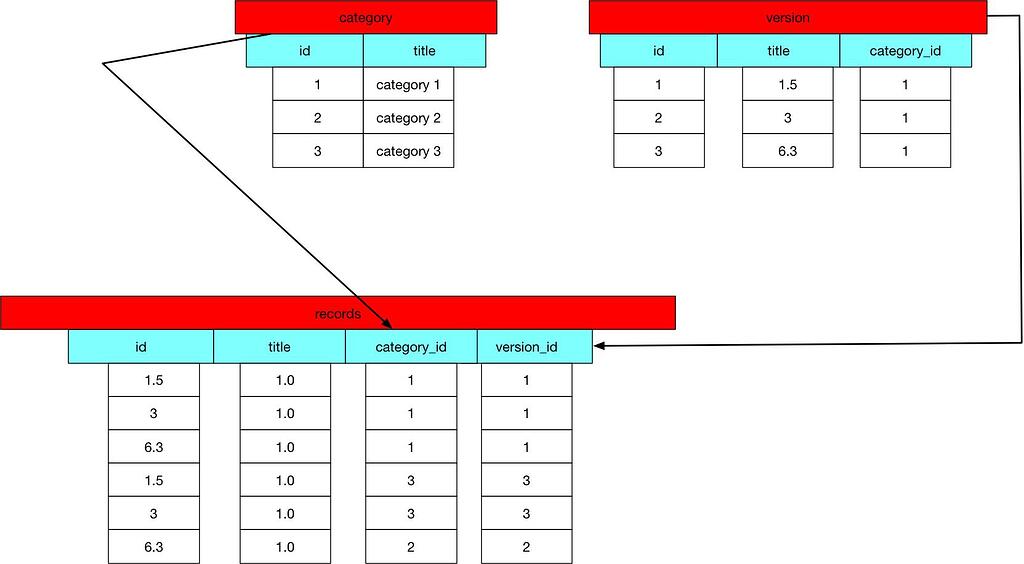

reject ( & &1 = "" ) |> insert_and_get_all ( ) end defp insert_and_get_all ( ) do end defp insert_and_get_all ( names ) do timestamp = NaiveDateTime. put_assoc ( :tags, parse_tags ( params ) ) end # Parse tags has slightly changed defp parse_tags ( params ) do ( params || "" ) |> String. By calling /3, Ecto will look for a 'todoitems' key inside the parameters given on cast, and compare those parameters with the items stored in the todo list struct. Let's define the schema and the changeset function for a post which may receive tags as a string: defmodule MyApp.Post do use Ecto.Schema schema "posts" do field :title field :body many_to_many :tags, MyApp.Tag, join_through : "posts_tags", on_replace : :delete timestamps ( ) end def changeset ( struct, params \\ % ) do struct |> Ecto.Changeset. In put_assoc/4, we give Ecto structs or changesets instead of parameters, giving us the ability to manipulate the data as we want. When we can't cope with cast_assoc/3, it is time to use put_assoc/4. Again, because the user is simply passing a string, we don't have the ID information at hand. However, here we expect tags to be sent in a string separated by comma.įurthermore, cast_assoc/3 relies on the primary key field for each tag sent in order to decide if it should be inserted, updated or deleted. We can see an example of this in Polymorphic associations with many to many. To do so correctly, Ecto requires tags to be sent as a list of maps. The cast_assoc/3 changeset function was designed to receive external parameters and compare them with the associated data in our structs. While the constraints above sound reasonable, that's exactly what put us in trouble with cast_assoc/3. Once this data is received in the server, we will break it apart into multiple tags and associate them to the post, creating any tag that does not yet exist in the database. Now let's also imagine we want the user to input such tags as a list of words split by comma, such as: "elixir, erlang, ecto". It is important to add an index at the database level instead of using a validation since there is always a chance two tags with the same name would be validated and inserted simultaneously, passing the validation and leading to duplicated entries. Note we added a unique index to the tag name because we don't want to have duplicated tags in our database. Our migrations would look like: create table ( :posts ) do add :title, :string add :body, :text timestamps ( ) end create table ( :tags ) do add :name, :string timestamps ( ) end create unique_index ( :tags, ) create table ( :posts_tags, primary_key : false ) do add :post_id, references ( :posts ) add :tag_id, references ( :tags ) end This is a classic scenario where we would use many_to_many associations. Not only that, a given tag may also belong to many posts. Imagine we are building an application that has blog posts and such posts may have many tags. To showcase those features, we will work on a practical scenario: which is by studying a many to many relationship between posts and tags.
Elixir ecto changeset code#
For instance, when you write a web application using Phoenix and you use Ecto to receive external changes and apply such changes to your database, we have this. This post was updated on 9 August 2023 with a code walkthrough for a sample app.

In our case, ecto can convert our string to a date so we get the desired result. We put emphasis on any because it is a common misconception to think Ecto schemas map only to your database tables. The thing to take from this is takes the fields on the data and compares it to what the schema says it should be, then attempts to coerce it to that type if it can.
Elixir ecto changeset how to#
In this guide we will learn how to use constraints and upserts. An Ecto schema is used to map any data source into an Elixir struct. So to anyone using this new get_or_insert function they can assume that any error indicates that something bad happened instead of having to make sense of the error.Settings View Source Constraints and Upserts Perhaps instead of trying to insert a user and acting on the error I should be checking if the user exists first in the user context function and if it does just return that user object and don’t try to insert anything. Is there a better way to pattern match on these error constraints? Or is there an alternative way of approaching the problem?
Elixir ecto changeset full#
I want to pattern match on this particular error constraint however this is a bit of a full on pattern match and it involves keyword list which means I have to get the number and order of items to match, i.e. When this case occurs I will get back a changeset that looks like: #Ecto.Changeset, This is enforced by a unique constraint on the table and a corresponding unique constraint on the changeset. I have a user table where I don’t allow two verified users with the same email to exist. You can use Ecto schemas and changesets without a database It is an incredibly useful library, once you get over the somewhat steep learning curve.


 0 kommentar(er)
0 kommentar(er)
